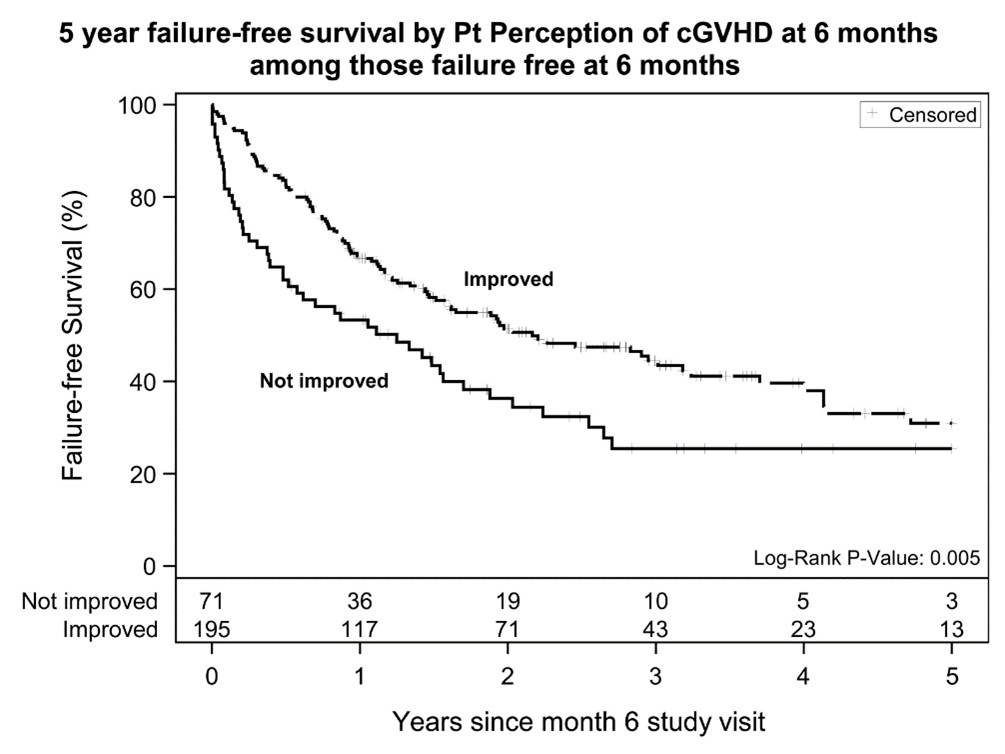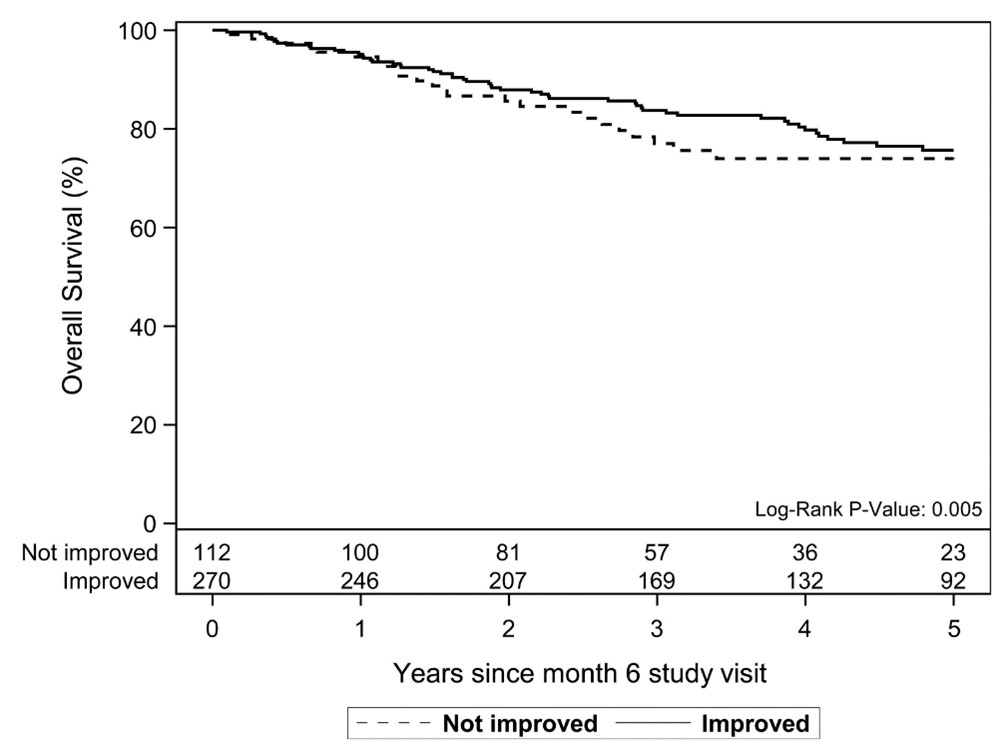This secondary analysis of two prospective observational study cohorts aimed to explore the correlation between patient-reported outcomes (PROs) in chronic graft-versus-host disease (GVHD) and clinician- and National Institutes of Health (NIH)-responses, shedding light on the significance of PROs in the therapeutic journey.
Download a PDF of the study highlights and citation.
Researchers found that PROs were significantly associated with failure-free survival, but limited associations were seen between clinical criteria for measuring the symptom burden of chronic GVHD and PROs. The outcomes underscore the importance of patient-reported feedback in improving GVHD treatment paradigms and measuring the success of hematopoietic cell transplant (HCT).
Background
Chronic GVHD treatment efficacy is generally evaluated through NIH Consensus criteria in clinical trials and clinician assessments in regular practice. Despite the central role of patient-reported feedback in understanding chronic GVHD experiences, treatment benefits and toxicities, its alignment with traditional assessment methods remains largely unexplored.
This study ventured to characterize PROs at 6 months, pinpoint associated GVHD attributes, and ascertain which quality-of-life metrics resonate with PRO feedback.
Study Details
The study included 382 patients from 2 multi-center Chronic GVHD Consortium prospective observational studies. Only participants with available PRO data were included in the analysis.
Results
At the 6-month mark, a majority (71%) of patients reported improvements in their chronic GVHD, contrasting with the 29% who noticed no changes. The correlation between PROs and clinician-reported responses was limited (kappa=0.37) and even more so with NIH response criteria (kappa=0.18).
Factors influencing PROs included initial lung condition; NIH responses concerning eyes, mouth and lungs at 6 months; and specific quality-of-life metrics. Notably, patients with better initial general health perceptions and those who witnessed enhancements from the beginning to the 6-month interval were more likely to report improvements. Additionally, lower scores on the Lee Symptom Scale and enhancements in eye scores over the same period were positively associated with patient-reported improvements.
Patients noting improvements in PROs also had higher failure-free survival rates. The leading reason for failure was the commencement of a new chronic GVHD treatment. However, the overall survival rates between the improved and non-improved groups showed no marked difference at 6 months.
Key Takeaways
Patient-reported feedback is a vital metric in chronic GVHD and was strongly associated with failure-free survival rates. The limited alignment of PROs with clinician- and NIH-responses underscores the need for a more inclusive approach in GVHD treatment evaluations.
This feedback serves as a potential game-changer in clinical trials and drug development for chronic GVHD, emphasizing that understanding the patient's perspective is fundamental in the journey from transplant to cure.
Figures


Im A, et al., Published in Haematologica
